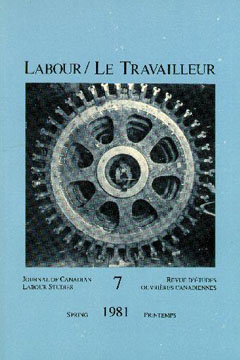Abstract
THIS ARTICLE COMPARES and contrasts the attempts by workers in Britain, France, Germany, the United States, and Canada to organize industrial unions at the beginning of the twentieth century. It starts with the premise that revolutionary industrial unionism was an international phenomenon, arising from similar socioeconomic conditions in the advanced capitalist countries, and that simultaneous movements to found "one big union" of all industrial workers should be seen in this light. The article proceeds to analyze the different views of industrial unionists on the subjects of dual unionism, organization and politics within an overall tendency in favour of one big unionism. It argues that syndicalism was only one faction active in the movement and that revolutionary industrial unionism was much broader in scope than syndicalism. The article further analyzes the social bases of the movement among unskilled workers and specific groups of skilled workers in the mass production industries. Finally, it points out the tactical originality of the movement and why its tactics posed a revolutionary challenge to capitalist control of the economy.
L'ARTICLE COMPARE ET MET en opposition les tentatives faites par les travailleurs de Grande-Bretagne, France, Allemagne, États-Unis et Canada pour mettre sur pied des syndicats industriels au début du XXe siècle. L'auteur fait l'hypothèse au départ que le syndicalisme industriel à tendance révolutionnaire était un phénomène international, né de conditions socio-économiques similaires dans les pays capitalistes, et que cette tendance commune à fonder de vastes syndicats de travailleurs par entreprise doit être analysée sous ce jour. L'article passe en revue l'idéologie des leaders du syndicalisme industriel sur des thèmes comme le syndicalisme parallèle, l'organisation et la politique. L'auteur soutient que l'anarcho-syndicalisme ne représente qu'une tendance dans le mouvement et que le syndicalisme industriel en contient beaucoup d'autres. Les assises du mouvement, soutient l'auteur, se trouvent parmi les travailleurs non qualifiés et certains groupes d'ouvriers qualifiés dans les entreprises de production de masse. Finalement, l'auteur relève l'originalité tactique du mouvement, et pourquoi ces tactiques ont posé un défi au contrôle capitaliste de l'économie.
